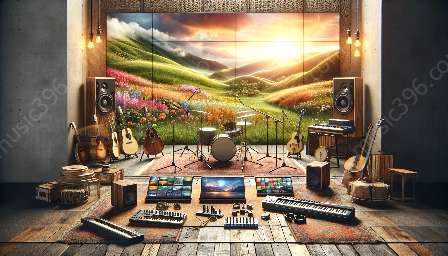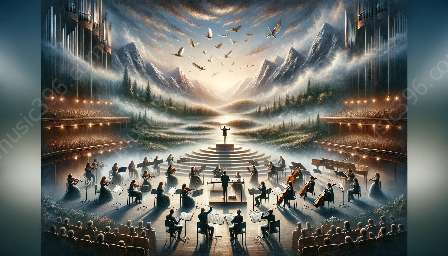Creating and editing sheet music using software offers numerous advantages for musicians, composers, and music enthusiasts. With modern technologies, it has become easier and more efficient to notate, arrange, and share musical compositions. In this topic cluster, we will delve into the process of using software to create and edit sheet music, exploring the tools, techniques, and best practices.
Understanding Sheet Music
Before diving into the world of creating and editing sheet music using software, it is essential to have a solid understanding of what sheet music is and how it functions. Sheet music, also known as musical notation, is a written or printed representation of music that uses musical symbols to convey pitch, rhythm, dynamics, and other elements of a musical composition.
Traditionally, sheet music has been hand-written or typeset, requiring significant time and effort to produce and edit. However, with the advent of music notation software, musicians can now use digital tools to create, edit, and print sheet music with ease.
Music Notation Software
Music notation software, also known as music scoring software, is designed to aid composers, arrangers, and musicians in creating, editing, and sharing sheet music. These programs provide a range of features and tools that streamline the process of notating musical compositions, offering efficiency and flexibility in the creation and editing of sheet music.
Some popular music notation software includes Sibelius, Finale, Dorico, MuseScore, and Noteflight. Each of these programs has its own unique set of features and capabilities, catering to different needs and preferences of musicians. These software applications typically offer functionalities such as note input, MIDI support, score playback, flexible layout options, and extensive libraries of musical symbols and notation elements.
Creating Sheet Music
When creating sheet music using software, the process typically involves inputting musical notes, rhythms, dynamics, and other musical symbols using the software's interface. Users can choose from different input methods, including mouse and keyboard input, MIDI keyboard integration, and even handwriting recognition in some advanced software.
Music notation software typically provides intuitive tools for note entry, allowing users to select note durations, pitches, and articulations using simple mouse clicks or keyboard shortcuts. Additionally, these programs often offer automatic spacing and alignment features, ensuring that the layout of the musical score is visually appealing and easy to read.
Furthermore, composers and arrangers can take advantage of the software's playback functionality to audition their compositions as they work. This feature enables users to listen to the musical score in real-time, facilitating the process of fine-tuning musical arrangements and ensuring the accuracy of the notated music.
Editing Sheet Music
Editing sheet music using software provides unparalleled flexibility and convenience, allowing musicians to make precise adjustments and revisions to their compositions. Common editing tasks include modifying note pitches, changing rhythms, adjusting dynamics and articulations, and reorganizing musical elements within the score.
One of the key benefits of using music notation software for editing sheet music is the ability to undo and redo actions, providing a safety net for experimentation and refinement. Additionally, advanced features such as transposition, chord analysis, and engraving options grant composers and arrangers the tools they need to achieve a polished and professional-looking musical score.
Sharing and Collaboration
Music notation software also facilitates sharing and collaboration among musicians and composers. Users can export their sheet music in various formats, such as PDF, MIDI, MP3, and MusicXML, allowing for seamless distribution and communication of musical compositions.
Furthermore, some music notation software platforms offer cloud-based collaboration features, enabling multiple composers and musicians to work on the same musical score simultaneously. This collaborative approach streamlines the process of composing, arranging, and editing music, fostering creative synergy and teamwork in the musical domain.
Conclusion
Using software to create and edit sheet music has revolutionized the way musicians, composers, and music enthusiasts approach musical notation and composition. The advancements in music notation software have made the process of notating, arranging, and sharing music more accessible, efficient, and flexible. By harnessing the capabilities of modern music notation software, creators can bring their musical ideas to life with precision and creativity, ultimately enriching the world of music.









































